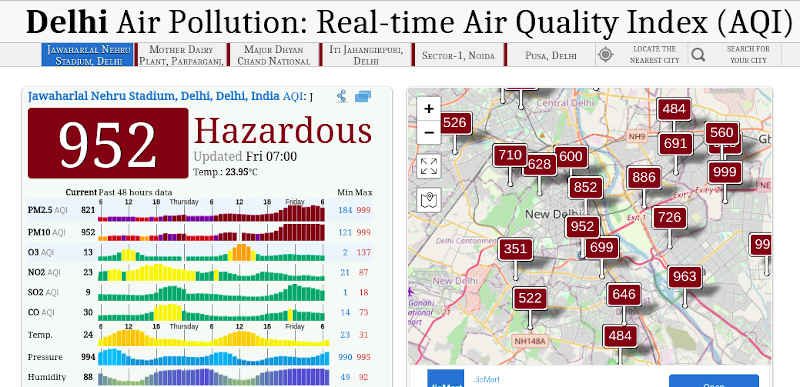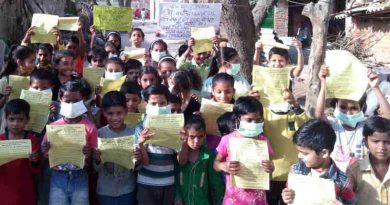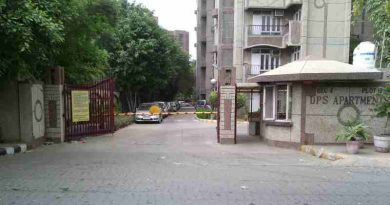Again, New Delhi Is the World’s Most Polluted Capital City

The extreme pollution in Delhi is usually compared to the poisonous gas chambers used by Nazi Germany during the Holocaust for the genocide of millions of European Jews.
By RMN News Service
The capital of India New Delhi is the world’s most polluted capital city for the fourth consecutive year, followed by Dhaka (Bangladesh), N’Djamena (Chad), Dushanbe (Tajikistan), and Muscat (Oman).
Also, India is among the top five most polluted countries, along with Bangladesh, Chad, Pakistan, and Tajikistan.
These are among the findings of the 2021 World Air Quality Report released on March 22, 2022 by IQAir, a Swiss-based air quality technology company which operates in more than 100 countries worldwide.
The report finds that only three percent of cities and no single country met the latest World Health Organization’s (WHO) PM2.5 annual air quality guidelines. It analyzes PM2.5 air pollution measurements from air monitoring stations in 6,475 cities in 117 countries, regions and territories.
IQAir’s 2021 World Air Quality Report is the first major global air quality report based on the updated annual WHO air quality guideline for PM2.5. The new guideline was released in September 2021 and cut the existing annual PM2.5 guideline value from 10 µg/m3 to 5 µg/m3.
Fine particle pollution, known as PM2.5, is commonly accepted to be the most harmful, widely monitored air pollutant and has been found to be a major contributing factor to health effects such as asthma, stroke, heart and lung diseases. Also, PM2.5 leads to millions of premature deaths every year.
“It is a shocking fact that no major city or country is providing safe and healthy air to their citizens according to the latest World Health Organization air quality guidelines,” said Frank Hammes, CEO of IQAir. “This report underscores just how much work remains to be done to ensure that everyone has safe, clean and healthy air to breathe. The time for action is now.”
According to the report, air quality in China continued to improve in 2021. More than half of the cities in China included in the report saw lower levels of air pollution when compared to the previous year.
Pollution levels within the capital city of Beijing continued a five-year trend of improved air quality, driven by emission control and reduction of coal power plant activity and other high emission industries.
Unlike China, pollution is increasing in India while Delhi pollution is going from bad to worse because of government corruption and overall lawlessness. Since the Indian Government, Delhi Government, and pollution-control agencies such as Central Pollution Control Board (CPCB), Delhi Pollution Control Committee (DPCC), the Commission for Air Quality Management (CAQM), and National Green Tribunal (NGT) are full of corrupt and ignorant officials, they are not taking proper steps to save people’s lives from increasing pollution in Delhi.
Instead of taking decisive actions, the negligent officials are still dependent on rain and wind to take pollution away from Delhi. A global environment research organization Greenpeace Southeast Asia reveals that pollution killed 54,000 people in just one year (2020) in Delhi while the city is at the top of a list of world’s five most polluted cities. In other words, pollution is killing nearly 150 people everyday in Delhi while hundreds of Delhi residents are falling sick.
The Greenpeace research report released in 2021 reveals that these are avoidable deaths – one death per 500 people in Delhi’s population of 30 million – which are taking place due to PM2.5 air pollution and the estimated economic cost to Delhi in 2020 was US$ 8.1 billion.
The extreme pollution in Delhi is usually compared to the poisonous gas chambers used by Nazi Germany during the Holocaust for the genocide of millions of European Jews.
Meanwhile, the “Toxic City” report highlights the perennial problem of air pollution in New Delhi and surrounding areas with certain preventive recommendations for the government, pollution-control agencies, and courts to reduce the level of pollution.





